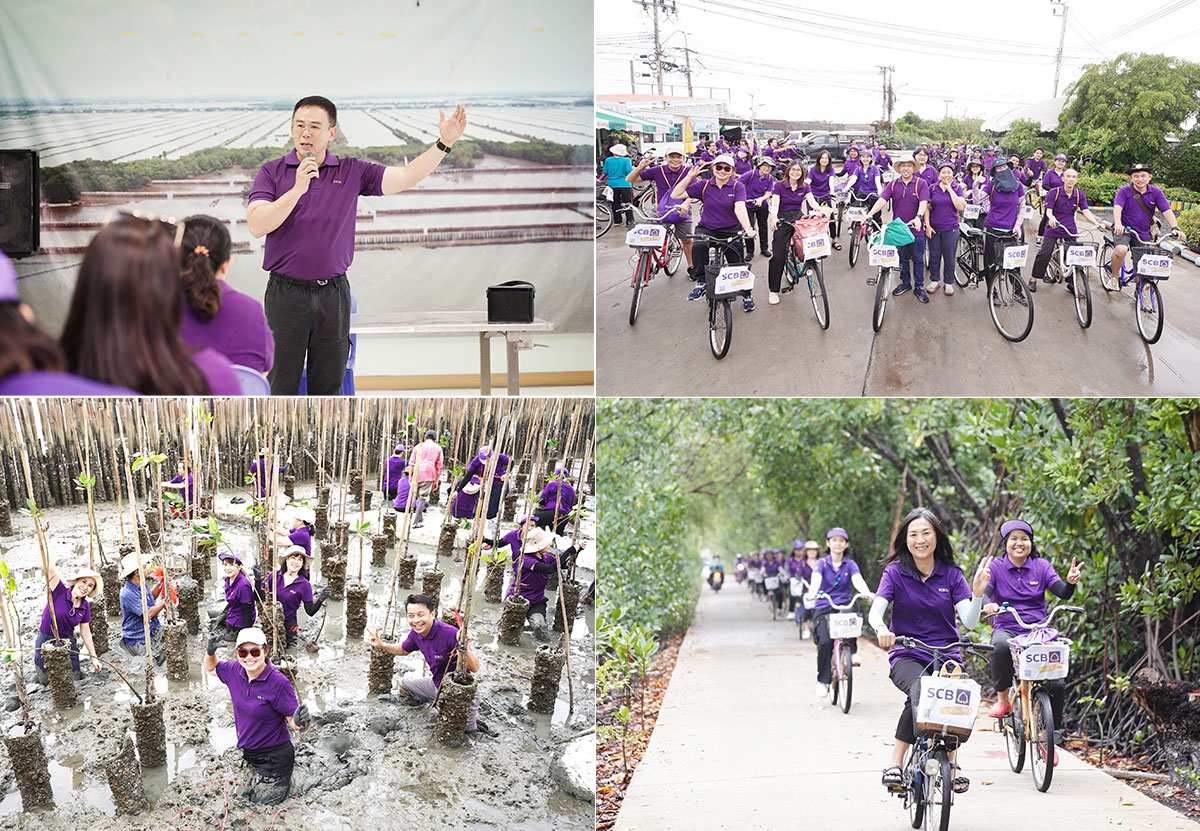I WANT
RELATED LINKS
I WANT
RELATED LINKS
RELATES LINKS
I WANT
RELATES LINKS
Services
Related Links
Use and Management of Cookies
We use cookies and other similar technologies on our website to enhance your browsing experience. For more information, please visit our Cookies Notice.
“SCB, Let’s Ride to Plant” 2024 adds mangrove forest areas for a second year to cultivate awareness of environmental conservation and reduce carbon dioxide for the world

Siam Commercial Bank (SCB) recently held an “SCB, Let's Ride to Plant" activity for a second year to raise awareness of environment conservation among SCB people. SCB First Executive Vice President and Chief Operations Officer Ms. Wannarat Phanjan and Mr. Saksit Pitipongsunthorn led some 50 SCB volunteers on a bicycle ride to plant 300 mangrove trees in Bang Khun Thian. The activity helped increase the mangrove forest area and restore the conditions of the coastal ecosystem for improved carbon dioxide absorption. This was part of the Bank’s “Planting 100,000 Trees” campaign supporting increased green space for the metropolitan area in line with the “Planting 1 Million Trees” policy of the Governor of Bangkok, Mr. Chadchart Sittipunt.
Prior to the activity, officers from the Bang Khun Thian District Office gave a briefing on the mangrove forest situation and its importance at the Local Museum of Bangkok, Bang Khun Thian District. SCB executives and staff then took a bike ride from the Rak Thale Bridge, Bang Khun Thian along a beautiful nature trail to plant 300 mangrove trees at the Bang Khun Thian mangrove forest plantation plot, Khwaeng Samae Dam, Bang Khun Thian District Bangkok. The total round trip cycling distance was 8 kilometers.

Mangrove forests benefit marine and coastal ecosystems by providing a source of food and habitat for biodiverse plants and animals, helping absorb and store carbon dioxide, reducing greenhouse gas emissions that cause global warming more effectively than other types of forests, increasing oxygen in the atmosphere, reducing the intensity of wind waves, filtering wastewater from the land before it reaches the sea, and preventing coastal erosion.
